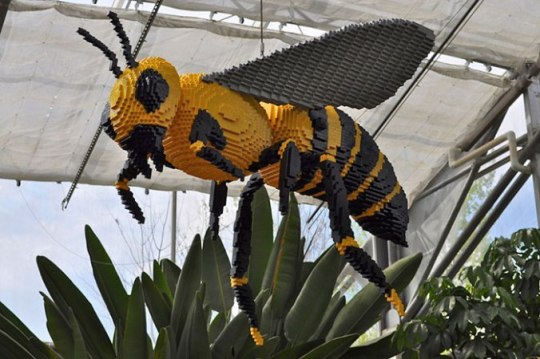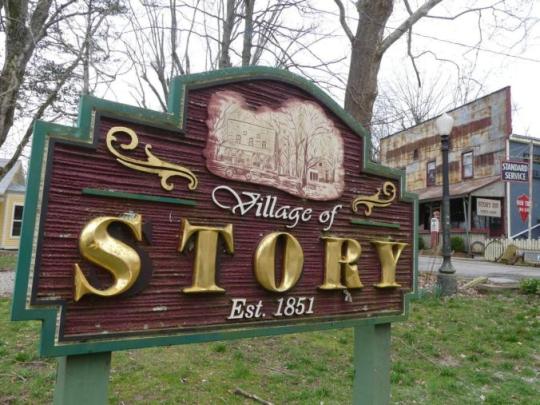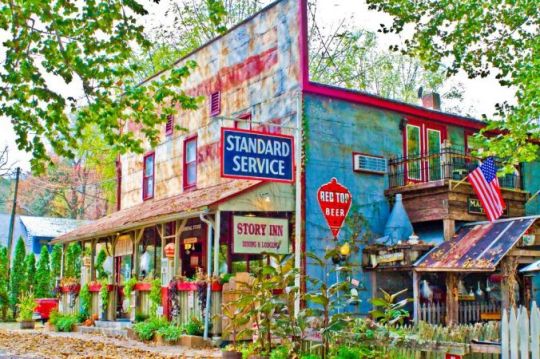#and now i am going to be in the gristmill i think
Text
Mantra for today:
Other people’s perceptions and opinions of me are none of my business.
#hard to do#esp when u KNOW how the gossip mill works#and how two faced ppl can be#and now i am going to be in the gristmill i think#not to my face#but behind my back#it is none of my business what ppl say behind my back#i know my intentions#i know my heart#i need to do what is best for me an hope they respect that#just gotta ride out the rest of the year#kiki shouts into the void
4 notes
·
View notes
Text
Gristmill (still) still standing in Bellona
By Jonathan Monfiletto

The headline for this article is a play of sorts on the headline of an April 20, 1966 newspaper article: “Grist Mill Still Standing,” about the gristmill in Bellona built nearly 200 years ago on the south side of Kashong Creek. That article is interesting in light of an item that appeared six months later, in October 1966, stating the owner of the garage across the road planned to sell the mill for its materials and have it torn down to make way for a parking lot for his business.
Another article from 1966, headlined “5-Story Grist Mill Must Go, Owner Says,” caught my attention. One day from my post in the research room, I was looking into something totally different when I came across this article about the desired removal of the mill in Bellona. “Hmm, OK, that’s nice,” went my initial reaction, as I kept searching for information on the topic at hand.
As I continued sifting through the Bellona subject file, though, a lightbulb came on in my head. “Hey, wait a second,” I thought to myself about the newspaper article. “I recognize that gristmill in that picture. I think I drive by it every day.”
I ride the length of Preemption Road from Routes 5&20 to Route 54 and back on my way to and from work, travelling through the hamlet of Bellona. On the way home that afternoon, I made a point to look to my right as I drove through Bellona – sure enough, there was the gristmill from the picture. It hadn’t been torn down after all and is in fact still standing. I wanted to find out what happened and why.
I searched again through the Bellona subject file and learned Jacob Carpenter, the owner of the garage, sold the mill to John Fontana in 1972. Fontana and John Prendergast, who bought the mill and the adjacent general store along with Fontana, planned to restore the mill and the store. A $5,000 interest-free loan from the Geneva Historical Society – now called Historic Geneva – supported their efforts.
A series of newspaper articles from the late 1970s to the early 1980s details Fontana and Prendergast’s efforts – both physically and financially – to restore the mill and store. However, the research trail goes cold after a November 14, 1982 newspaper article in which Fontana acknowledged losing sight of the objective but vowed the mill would come to life again one day.
So I’m wondering what has happened with the mill, which is clearly still standing, in the 40 years since the last record we have of it at the History Center and who is in charge of the property now. Another mystery, at least to me, is what happened to the general store, which is clearly not still standing but still had one tenant in 1972.
While other people will certainly know more about the mill and the store than I do right now, I’ll keep looking into this and seeing what I can find out because it is a history mystery of sorts to me. What I am certain of is the first almost 200 years of mills in Bellona because that history is well documented in the History Center’s files.
The first mill in Bellona was built by Caleb Benton, the namesake for the town in which the hamlet lies, and was located on the north side of Kashong Creek. The spot was chosen because of the water power provided by the creek and its falls and the logging facilities nearby. James and Otis Barden operated the sawmill, and Benton built a 30x40-foot barn near the mill a year later. Around 1800, a frame gristmill went up on the south side of the creek, and in 1828 a stone structure replaced it. The stones used to build it came from the creek, and the cement was made by burning limestone in a limekiln.
An eight-foot-high dam across Kashong Creek supplied power by raising the water level 12 feet above the top of the falls. A sluiceway dropped water on an undershot wheel.
In November 1854, fire destroyed sections of the interior of the mill. George Barden and his son Ashley – descendants of James and Otis – took ownership of the mill and restored it into a combined gristmill and sawmill. They leased the mill to relatives Thomas and James Barden, who provided lumber to Geneva by transporting lumber down Kashong Creek into Seneca Lake.
Another fire swept through the mill in 1863, destroying the roof and interior, and left it idle for the next two decades. At that point, George Barden sold the mill to Nathan Maxwell for $5,000 in gold – because Barden would not accept a check – and Maxwell rebuilt the mill with a shingle roof and plaster interior walls. Maxwell also converted the mill operation from millstones for grinding to then-new rollers to speed up the process.
Around the turn of the 20th century, the mill modernized – John Alexander replaced the wheel with a turbine in 1889, and Jefferson Davenport rebuilt the dam to raise the water level. The Bill family, the last operators of the mill from 1925 to 1959, adapted the mill for steam power and later for gas power.
During its lifetime, the mill produced animal feed as well as flour and grain and at one point included a cider mill with a press and other fixtures and machinery for cutting pipes and tools. Several sources indicate the stone gristmill in Bellona is the last of its kind remaining in New York State and possibly the United States.

2 notes
·
View notes
Text
Hey guys … it’s the weekend!!! And better yet, spring is finally here … well, sort of. My crocuses are in bloom, though there are only four of them, Maha’s daffodils are blooming, and I was outside for a few minutes today in a t-shirt and didn’t even feel cold!

I am not an artistically talented person, as I’ve mentioned before, but I admire those who are. I’ve concluded, though, that some people have entirely too much time on their hands. Legos. Remember building stuff with Lego bricks? I could build a fence, or a small house (no windows, doors or roof, though). But take a look at the artistic endeavours some have accomplished with those little plastic blocks …

Full-size Lego giraffe


Probably just as safe as a Boeing

The Beatles in Legoland

This cruise ship is 8.44 meters long, 1.33 meters wide and 1.54 meters high, and is made from more than 2.5 million LEGOs. The weight of it is also quite stunning because it weighs around 2 tons, that is, about 6,100 pounds!


They even re-create classical paintings and sculptures with Lego …

Escher’s Relativity

Da Vinci’s Mona Lisa

Mount Rushmore

Munch’s The Scream

Rodin’s The Thinker
Talented? For sure, but I still have to ask … who has time to do these things? There are plenty more if you’d like to check them out at Bored Panda!
Now, when you think of squirrel, what do you think of? Grey, brown, muted colours, right? But I bet you didn’ know about the Malabar giant squirrel, also known as Shekru. These guys are native to India … take a look …

As the name suggests, they are huge. Stretching as long as 3 feet, they are much harder to miss than our own scurrilous buddies. Admittedly though, the brilliantly blue bushy tail accounts for much of the Malabar’s length.

However, they may be more difficult to find than their large size and bright coat suggest. The shades of black, brown and orange, as well as maroon and purple, can assist them in blending perfectly with the forest canopy, where they spend their time leaping from tree to tree. This is especially useful for escaping the attention of predators, such as various birds of prey and also leopards.


Did you know that there is an entire town for sale in Indiana? No? It’s the town of Story, Indiana, and there is a … wait for it … story to go with the town!

The town began in 1851, when a doctor named George P. Story received 173 acres of land from Millard Fillmore, 13th president of the United States. Over the years, the town then known as “Storyville” started to grow—farms, Story’s medical practice, and a school. In 1882, Story got its first dry goods store and post office. It never grew particularly large, but the story goes that the Great Depression cleared out what few families were left, threatening to end Story and turn it into a ghost town.More or less abandoned to the elements, Story saw a small resurgence in the early 1980s. Benjamin (who goes by just one name) encountered the town—on the edge of Brown County State Park and not far from Bloomington—for the first time in 1978. He saw the old general store, a house, a gristmill, a barn, and “an assortment of mostly dilapidated buildings,” on four and a half acres and for sale for $65,000. He and his wife Cyndi took a chance on the unique town and decided to set up shop in the form of a restaurant, housed in the old general store. “[It] had no indoor plumbing when we moved there, only an outhouse in back,” he says. The second floor was one large room. “Many years previous, owners had obtained a Studebaker franchise and assembled buggies up there,” Benjamin says. “Parts were sent by rail from South Bend to Freetown, brought to Story on horse-drawn carts and first-generation pickup trucks, hauled upstairs, and assembled. The final products were let down on a ramp through a door in the back.” He remembers Story being very dark, and very quiet.

Benjamin’s restaurant
There are only six houses in Story. One of them, built in the Queen Anne style, is the Wheeler-Hedrick House, across the street from the store. Another, built in 1858, is known as the Story-Griffitt House. Benjamin and Cyndi bought them all, one at a time, and converted them into overnight accommodations—the Story Inn. “We also built a commercial kitchen in the back [and] the old general store became the dining room,” Benjamin says. “When we sold Story we had a 100-seat restaurant and 18 overnight rooms, all on 23 acres.”

The town’s current owner, Rick Hofstetter, bought the town in 1999. Hofstetter put more effort into Story, and the 40 years of care has turned into a fairly popular—though out-of-the-way—tourist destination. While most of Story’s buildings have been renovated, the village has not lost its 19th-century charm. Because it was a relatively desolate (and poor) town for decades, its original historic wooden floors, globe lighting, and tin ceilings remain. Just last month, the town was officially listed on the National Register of Historic Places.
Today all of Story can be yours, for only $3.8 million! Hey, if all my readers kicked in a mere $1,396 each, we could go in together and have our own little town!
Well, folks, I know you have a weekend awaiting you … I hope you have a great one and do something fun!

Saturday Surprise — Legos ‘n Squirrels ‘n A Town For Sale Hey guys … it’s the weekend!!! And better yet, spring is finally here … well, sort of.
#Escher#George P. Story#ghost town#Lego creations#Malabar giant squirrel#Mona Lisa#Mount Rushmore#Story Indiana#The Scream
0 notes
Text
Day 1: North Carolina and Virginia (2017)
Day 1:
North Carolina and Virginia
I woke up at 2 a.m., finished the last-minute packing, had breakfast and met my Lyft ride at 3:50 in the morning! My driver was so interesting, and his story really tugged at my heart. He fled Syria, but his wife and daughter are still there, waiting to come over here. I am praying for their safety.
I arrived at Logan Airport around 4:30 a.m. Surprisingly, there was quite a crowd in the security line, but there are cheap flights and international flights that take off in the early morning (for anyone that didn’t know). My flight to Baltimore, Maryland touched down in the city around 7:30 a.m. just in time for lunch at Chipotle before my connection to Charlotte, North Carolina. When I arrived, I met my friend and her sister and had a second lunch with them. Then, we drove until we reached the Virginia state line. We stopped at the Welcome Center where they gave us an additional idea of where to go, a winery. They even handed us three corks to trade for a free glass of wine.
The first stop on our tour was the Shot Tower State Historical Park in Austinville, VA. In 1800, businessman and local lead miner, Thomas Jackson, built a 75-foot limestone tower on a hill overlooking the New River, to use as a factory to produce ammunition. The process was quite fascinating and one of a kind. The heated lead was poured through sieves of different sizes depending on what they were making and then would free-fall 150 feet, an additional 75-foot shaft was built through the ground, into a kettle of water at the bottom which provided a cushion. The fall through the tower helped to create the bullet’s rounded form and the 2 1/2 feet thick walls helped to prevent the ammunition from cooling too quickly. To reach the kettle, they built an access tunnel by the edge of the river, which conveniently supplied them with plenty of water for the kettle. They used either a pulley system or slaves to bring the lead via a wooden staircase up to the heating room at the top of the tower. After it was made, the finished ammunition then shipped down the river to be sold. The tower has been open to the public since 1968. Tours are sporadically scheduled throughout the summer. Unfortunately, it was closed when we were there. I can’t help but think about who those bullets, made at the shot tower, killed or hurt, people and animals alike.
Just down the road, was the village of Foster Falls, established in the late 1800’s. The main attraction there is the Foster Falls Hotel which was built in the late 1800’s. Over the years, it was home to many things. The hotel closed in 1914, and in 1919, it was turned into a women’s industrial school, which later was turned into an orphanage from 1938 until 1962. In 1940, a fire damaged the hotel. Plans are in the works to restore it for historical purposes. Further down the road is the train depot which is now a visitor’s center. There is an original train car outside from Norfolk and Western Railway that serviced the area. The Foster Falls Mining and Manufacturing Company built an iron furnace in 1881 and improved/enlarged it in 1906. It used charcoal fuel and cold-blast production, the last in the area. The village was known for producing pig iron – around 3000 tons annually – brought in from local iron mines and delivered to places like Cincinnati, St. Louis and Baltimore, via the Norfolk and Western Railway. The iron industry was just as interesting and big as coal mining. The town’s general store is still standing and is going to be restored in the near future. Like many villages near a river, there was a gristmill, a place to ground grains into flour, and a sawmill, a place to cut lumber, both helped by a millrace or water wheel in the New River. Along the river is a section where there are tiny rapids. It is a popular spot for fishing. I keep picturing a town like the one in “Dr. Quinn Medicine Woman” or “When Calls The Heart,” when I think about what Foster Falls was like.
Finally, the last sightseeing stop of the day was the vineyard at West Wind Farm Vineyard and Winery. Jason Manley was working in the vineyard when he saw us arrive. He greeted us with his thick Southern accent and charm. We turned in our corks for a free glass of wine. I tried the Blackberry Wine and Peach Wine. My favorite was the Blackberry. I’m not a big drinker, but I liked the moist and fruity flavor of the red wine as opposed to the drier white wine. The property was absolutely beautiful, and I was not expecting a vineyard in the middle of Virginia. In case anyone is interested in a job change, the Vineyard is for sale!
Later that night, my friend and I went to the Bluegrass Jam in downtown Wytheville, Virginia. They played a few of my favorite songs, “Last Kiss” and “Tennessee Flat Top Box.” You can see a video clip of “Last Kiss” here!
What a great first day! Stay tuned for Day 2: Beckley Coal Mine, Coal Camp, and Mountain Homestead in Beckley, West Virginia.
Until next time, this is the Sightseeing Sociologist signing off!
0 notes